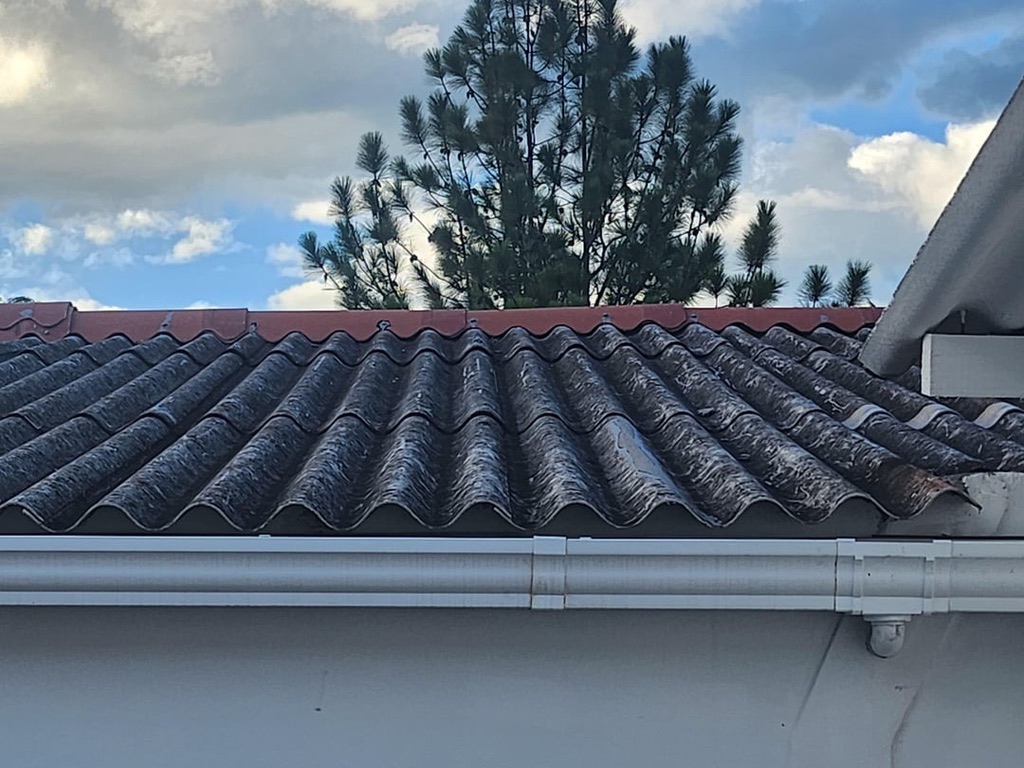Summary
The image shows weathered, dark corrugated roofing panels, a material commonly identified as fiber cement. Based on the product type, its application, and common manufacturing practices for its era, there is a high probability that these panels contain asbestos. It is strongly recommended to treat the material as asbestos-containing and to have it professionally tested before any disturbance or removal.
Object description
The image displays a section of a roof covered with dark gray, weathered corrugated panels. These panels have a uniform, wave-like profile and are installed as the primary roofing material. The surface appears aged, with some discoloration and potential biological growth, which is typical for older exterior building materials. The panels are situated above a white gutter system.
Asbestos Assessment
The material in question is visually identified as corrugated fiber cement sheeting, a common roofing product. This type of material, especially if installed several decades ago, was frequently manufactured using asbestos fibers (typically chrysotile) embedded in a cement matrix to enhance its strength, durability, and fire resistance. The appearance of the panels in the photograph—their shape, color, and application as roofing—is highly consistent with asbestos-cement (AC) products. While visual inspection alone cannot definitively confirm the presence of asbestos, the product category itself carries a high suspicion level. Fiber cement is a non-friable, bonded asbestos material, meaning the fibers are locked within the cement. The risk of fiber release is lower when the material is intact and in good condition. However, the visible weathering and age of these panels increase the potential for degradation, damage, or breakage, which could release hazardous asbestos fibers into the air. Without a clear view of a broken edge, it is impossible to see the characteristic fiber bundles, but the material type is a very strong indicator of asbestos content.
Recommended action
Given the high probability of asbestos content, it is imperative to treat the roofing material as asbestos-containing until proven otherwise through laboratory testing. Do not attempt to drill, cut, sand, break, or clean the panels with high-pressure water, as these actions can release dangerous fibers. For definitive identification, a licensed asbestos professional should be contracted to safely collect a sample for analysis by an accredited laboratory. Any future repair, maintenance, or removal work on this roof must be performed by qualified and licensed asbestos abatement contractors to ensure safety and compliance with regulations.
Attachments
Share report
Direct Link: https://my.asbestos.help/r/ffce77ed-10cd-44c6-85c6-0237194f6509
Quick Code: MK2MA (https://my.asbestos.help/c/MK2MA)

